

| MAS ETH ARCH/CAAD - 2005/06 - STUDENT PAGES
Master of Advanced Studies in Architecture, Specialization in Computer Aided Architectural Design | 065-0005/6
Supervision: Prof. Dr. Ludger Hovestadt, Philipp Schaerer
Chair of CAAD, ETH Zurich
MAS05-06: MODULE 02: TRANSLATING - FINAL RESULTS
B. Dillenburger | C. Fuhr | F. Thessling | M. Tann | M. Zäh | M. Annen | M. Versteeg | T. Wendt | T. Kotnik | D.Y. SHIN | Y.Girot-Ifrah | S. Markovic
Assignment:
A substantial aspect while using the computer as a tool concerns the procedure of translating. With simple procedures like scanning, importing and exporting files, data is translated and will be substantially or insignificantly changed. Starting point are again image samples. This time, they are read, analyzed and changed by the machine. The user defines the granulation, sharpness and the rules of the transformation within the process.
Starting point are portrait images, which are stored in the bitmap format (.bmp). Prepared Perl-Scripts read the images and export the selected information into a XML file. A Vetcor-Script imports and parameterizes the file depending on user-defined sets of rules. The scripts can be adapted and changed by the students. The samples will be materialised afterwards with the CNC laser. |
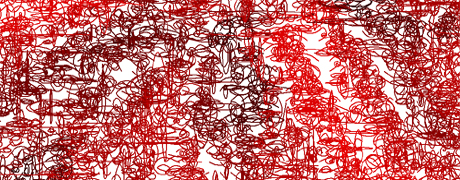 | | Kandinsky's Gambit
Toni Kotnik |
| Kandinsky's definition of a line as a moving point in his famous study at the Bauhaus Punkt und Linie zu Fläche describes the basic idea behind the following process of translation of a picture into a line drawing. The original bitmap was first scanned and the resulting grid of averaged gray scale values were written into a XML-file. This file was then used as input data for a vectorscript that translated Permu | | every value into a vector by dividing up the range of gray scales and assigning the resulting eight zones to the four different corners of a cube. The vector was then rotated at 90 degrees several times and added to itself thereby describing the control points of a spiraling NURBS in space: a geometrische Linie as the trajectory of a colored point in motion. |
| VectorScript/PlugIn: Download | | HierGehtsWeiterHierGehtsWeiterHierGehtsWeiterHierG..>> |
 | | Translating Vasarely
Martin Tann |
| Looking through a book about Victor Vasarely, I stumbled on a portrait drawn by himself. Interestingly he used designs which are quite similar to our exercises - but he did them by hand! I tried to pick up his idea of painting and even take it further by combining two pictures and a moiré effect in one single image. So I selected a portrait of Vasarely and one of his paintings, rasterized and translated them into an xml-file. The chosen resolution was 50 by 50. Afterwards these files were used by a vectorscript translatingvasarelytranslatingvasarelytra | | to create new images consisting of dots. The final step was to combine the two pictures. This way, a base sheet and a stamp were created.
After removing the dots of the stamp by a cnc laser cutter, the sheet can be put over the base and moved slightly. Like this a nice moiré-effect can be seen and if the two sheets are in the right position, the portrait of vasarely or his painting become visible. |
| VectorScript/PlugIn: mt translating vasarely | | ..>> |
 | | Lost in translation
Yael Girot Ifrah |
| My objectives in this exercize were to play around with what we learned in the previous module. For each drawing, I turn the number values for each raster block of the image into switches that create something else in the raster block. In the end, I have three translations. translatingvasarelytranslatingvasarelytra | |
| VectorScript/PlugIn: link to web / script | | ..>> |
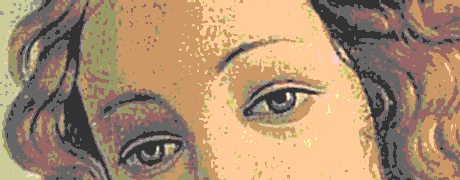 | | Babelfish
Benjamin Dillenburger |
| A simple script translates an Image into text. Not just the color of each pixel but also the contrast to the neighbours is relevant for some of the other transormations. The vector-result allows an easy output with machines. By another script, the image is translated into a 3D topograhy where rivers (lines) flow to the BabelfishBabelfishBabelfishBabelfishBabel | | local minimas. The user controls a simple urban design tool with the input of several pixelimages. Plugin-Houses were placed parallel to the topography, or rotate to interesting points. the size and the roof-angle is also editable. |
| VectorScript/PlugIn: [[][Download]] | | ..>> |
#Matthias Zaeh
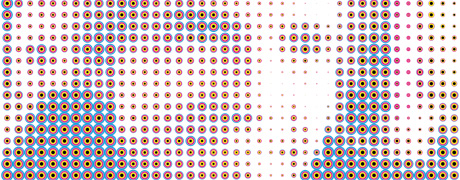 | | Power Pointrait
Matthias Zäh |
| This small script needs four images separeted in cmyk. For each colorvalue it creates a circle fill with a defined color. These four cmyk circles have the same center. The script adds the surfacearea of the first circle to the second and creates a new one with a new size. The new circle will be enlarged by the third one and so on until you get your own Power Pointrait. | |
| VectorScript/PlugIn: Download | | ..>> |
 | | Spaceman
Meindert Versteeg |
| A full color images is separate into RGB value by a Vectorscript. The three values are arranged in a triangle. A print out from each value are positioned behind each and produce the effect of virtual movement and optical illusion. To get the desired effect the images, that you can view as a PDF document, should be viewed at some distance from the monitor. | |
| VectorScript/PlugIn: [Download] | | ..>> |
 | | trans_it
Frank Thesseling |
| to understand how the stereoscopic depth perception works, the algorithms for a 'SIRDS' (single image random dot stereogram) is a basic research for this funktionality - so i create an algorithm to produce this images. to see this trans!ttrans!ttrans!ttrans!ttrans!ttrans! | | 3D images you have to point your eyes behind the imageplane. this ‚trick’ works with small pixels and even with symbols (blue snowflakes on the image above) important is the x-distance between the points. visit my mainpage and enjoy...
|
| VectorScript/PlugIn: Download | | ..>> |
| The first translation rastered the image in rectangular raster blocks along the x -axis and y-axis and switched color values into grayish values. This simple translation was taken as a starting point for further modifications. By translating2dtranslating2dtranslating2dtr | | using vectorscript the 'form', its dimension and its associated color value were varied for each raster block. As a result raster blocks interfere with each other and/or are even supereposed by an additional raster block.
|
| VectorScript/PlugIn: [Download] | | ..>> |
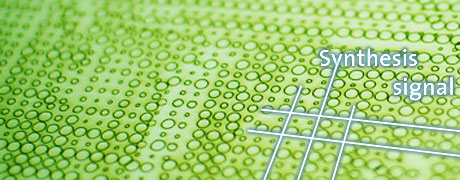 | | Synthesis signal
DongYounSHIN |
| Using a mask you can extract the information what we want exactly. There are many pixels to make an image, and each pixel is divided four cells. It means if there is a special mask which can pick one element out among the four cells we can get four images in one plate. | |
| VectorScript/PlugIn: [Download] | | ..>> |
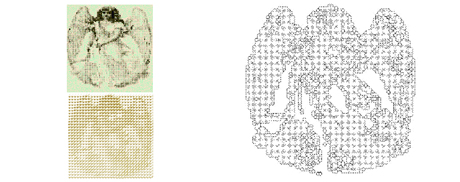 | | BasRelief
Claudia Fuhr |
| Enriched to monumental buildings such as temples or churches decorating them with a single scene or ordered into a narrative, angels are often theme and powerful portrayed. The aim was to model a low relief out of the reference image. Sharp contrasts were marked and the transformed pixels extruded to the third dimension. BasReliefBasReliefBasReliefBasReliefBasRe | | Bas-Reliefs, consisting of shapes carved on a surface so as to stand out typically scarcely embossed from the surrounding background, having still a flat form of appearance, like seen in numismatics also. [02-Translating] |
| VectorScript/PlugIn: Download | | ..>> |
Revision r1.17 - 17 Nov 2006 - 16:25 - NDSClaudiaFuhr
Parents: WebHome
|
Copyright © 1999-2003 by the contributing authors.
All material on this collaboration platform is the property of the contributing authors.
|
| |
|










